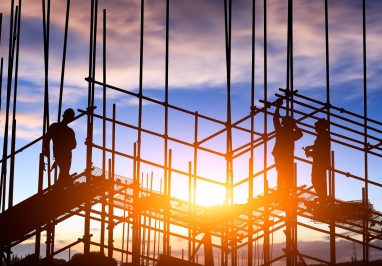
The Colorado Construction Defect Action Reform Act (C.R.S. § 13-20-801, et. seq.) (“CDARA”) was enacted to change the law concerning actions claiming damages in connection with alleged construction defects with the intent of preserving adequate rights and remedies for property owners (C.R.S. § 13-20-802) while limiting the damages available to those owners (C.R.S. § 13-20-806). Specifically, CDARA provides that when someone asserts a claim for personal injury that includes noneconomic damages (like, pain and suffering) resulting from construction defects, those noneconomic damages must be capped at $250,000. The application of CDARA has been a source of debate among scholars and attorneys. A division of the Colorado Court of Appeals recently provided some guidance regarding the application of CDARA in holding that CDARA does not limit the amount of noneconomic damages sustained by a flooring subcontractor’s employee allegedly caused by the condition of a temporary electrical box installed on a construction site by an electrical contractor.
In Warembourg v. Excel Electric, Inc., No. 18CA2358, 2020 WL 3865149 (Colo. App. Jul. 9, 2020) an electrical contractor (Excel) installed a temporary electrical box (the “Box”) to supply power to subcontractors working at a construction site. When a flooring worker’s (Warembourg) equipment failed to work after plugging into the Box, Warembourg removed the front cover of the Box and began toggling the circuit breakers inside the Box. Warembourg was electrocuted while toggling the breakers and suffered permanent and disabling injuries. Warembourg filed suit against Excel, and the jury returned a verdict in favor of Warembourg, finding Excel to be 100% at fault for Warembourg’s injuries and awarding damages totaling approximately $16 million, of which $5.3 million noneconomic injuries. Excel appealed, arguing among other things, that that Warembourg’s noneconomic damages should be capped under CDARA. The Colorado Court of Appeals rejected both arguments.
The Court of Appeals held that the case was “not a construction defect case” but represented a “quintessential premises liability action.” In this case, the court determined that Excel owned the Box, was responsible for its conditions, was responsible for providing electrical access to subcontractor at the project site, and that there was no evidence Warembourg lacked authority to toggle the Box’s internal breakers. According to the court, Excel was liable under Colorado’s Premises Liability Act. The court further explained that CDARA was enacted to proscribe the rights and remedies of property owners for construction defects created by construction professionals. The court determined that Warembourg was not a property owner under CDARA and that the Box that was removed at the end of construction was not an improvement to real property.
This case also helps clarify who is the protected party under CDARA: property owners. Personal injury claims, even those resulting from construction defects, asserted between contractors do not implicate CDARA according to the Colorado appellate court. Had the property owner suffered personal injuries, including noneconomic damages, this could have been a different case.
This case also calls into question whether general contractors can invoke CDARA against their subcontractors for construction defects because general contractors are not the property owners. In this case, the court reasoned that CDARA did not apply because “Warembourg was not a property owner and his claims did not arise from a defect impacting his property.” Similarly, a general contractor is typically not a property owner and construction defect claims does not arise from defects affecting their property. This is certainly an open question left by the appellate court’s ruling.
If you have any questions about CDARA or the application of CDARA to your claim or construction project, please contact one of Woods Aitken's Construction Attorneys. We encourage you to subscribe to our Construction Law E-Briefs for the latest construction news, tips, and updates.
Woods Aitken’s Coronavirus Resource page includes valuable information regarding the coronavirus pandemic and all of our publications on COVID-19. We encourage you to visit this page often for updates.
